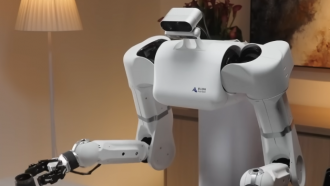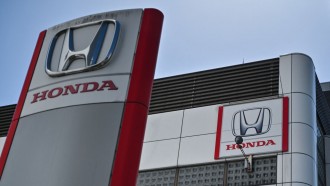A rare collision between a celestial object and Jupiter, our solar system's largest planet, was recently captured by an amateur astronomer.
This extraordinary incident sheds light on the frequent interactions Jupiter has with space debris!
Amateur Astronomer Spots Stunning Cosmic Event
The impact occurred on August 29, at 1:45 am Japan Standard Time (4:45 pm UTC, August 28), and it was a stroke of luck that an amateur astronomer happened to be observing Jupiter at that precise moment.
Okinawa-based astronomical observation projects OASES and PONCOTS alerted on X the discovery of a sudden flash on Jupiter's surface.
"If you were observing Jupiter around the same time, please check the shooting data again, and if you find a flash, please report it on TL or DM this account!" the account said.
MASA Planetary Log, an amateur space enthusiast's account, later released footage of a quick burst of light emanating from Jupiter that was accompanied by an apparent comet or asteroid impact.
きのうのTLで知った木星の閃光、撮影したデータを確認してみたら写っていました。
— MASA Planetary Log (@MASA_06R) August 29, 2023
…声が出ました(^^;
日本時間2023年8月29日1:45、世界時28日16:45です。https://t.co/UYhnvAmA63https://t.co/Y7nCHtJq4k pic.twitter.com/g0FerdyoVg
"I was very lucky to be photographing this phenomenon when it happened," they told Space.com, highlighting the rarity of capturing such an event in real-time.
However, one intriguing aspect of this phenomenon is the lack of information about the size of the celestial object responsible for the collision.
While its exact dimensions remain a mystery, it was undoubtedly substantial enough to create a noticeable spectacle in Jupiter's atmosphere.
Read Also: NASA's James Webb Space Telescope Unveils the Clearest Image of Whirlpool Galaxy
Jupiter's Planetary Defense
Jupiter, often referred to as the "king of the planets," is no stranger to celestial collisions. Its massive gravitational pull and proximity to the solar system's asteroid belt make it a prime target for cosmic debris.
A study from 2013 estimated that Jupiter is struck by objects with diameters between 5 to 20 meters (16.5 to 65 feet) approximately 12 to 60 times each year. In comparison, Earth encounters objects of this size roughly 10,000 times less frequently.
Jupiter's role as a celestial guardian cannot be understated. Its gravitational pull diverts many space objects away from Earth and the inner planets, acting as a space shield of sorts.
However, it also raises questions about whether Jupiter's gravitational influence occasionally redirects asteroids or comets toward our planet.
Jupiter Comet Impact
This recent collision is not the first time Jupiter has been a spectator to such dramatic events. The most famous collision occurred in 1994 when the comet Shoemaker-Levy 9 made history as the first-ever direct observation of two celestial bodies colliding in our solar system.
The impact of Shoemaker-Levy 9 on Jupiter not only allowed scientists to witness a new celestial phenomenon but also served as a wake-up call for humanity. It highlighted the importance of monitoring other planets and understanding the potential consequences of impacts on Earth.
The aftermath of Shoemaker-Levy 9's collision with Jupiter allowed for the refinement of impact models and contributed to our understanding of what could happen if a comet or asteroid struck Earth.
Before the Shoemaker-Levy 9 impact, the term "planetary defense" did not exist, and few teams were actively tracking near-Earth objects. However, the event spurred interest and funding for research in this field.
Today, NASA continues its efforts to identify at least 90% of asteroids between 450-3,000 feet (140-1,000 meters) wide.
Stay posted here at Tech Times.
Related Article: Space Archaeology: Ancient Meteorite Found on Earth Gives Clues to the Origins of Our Solar System





